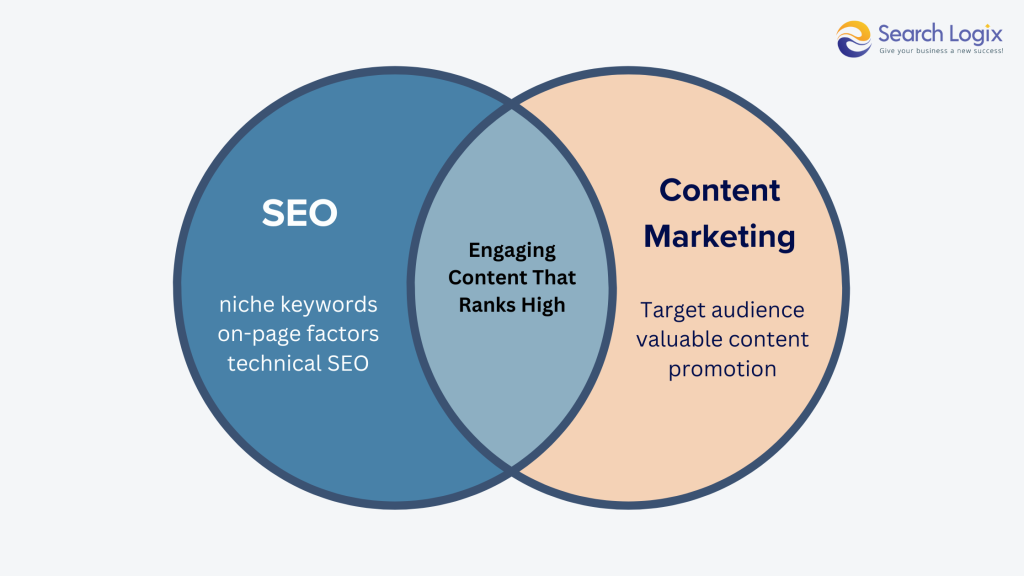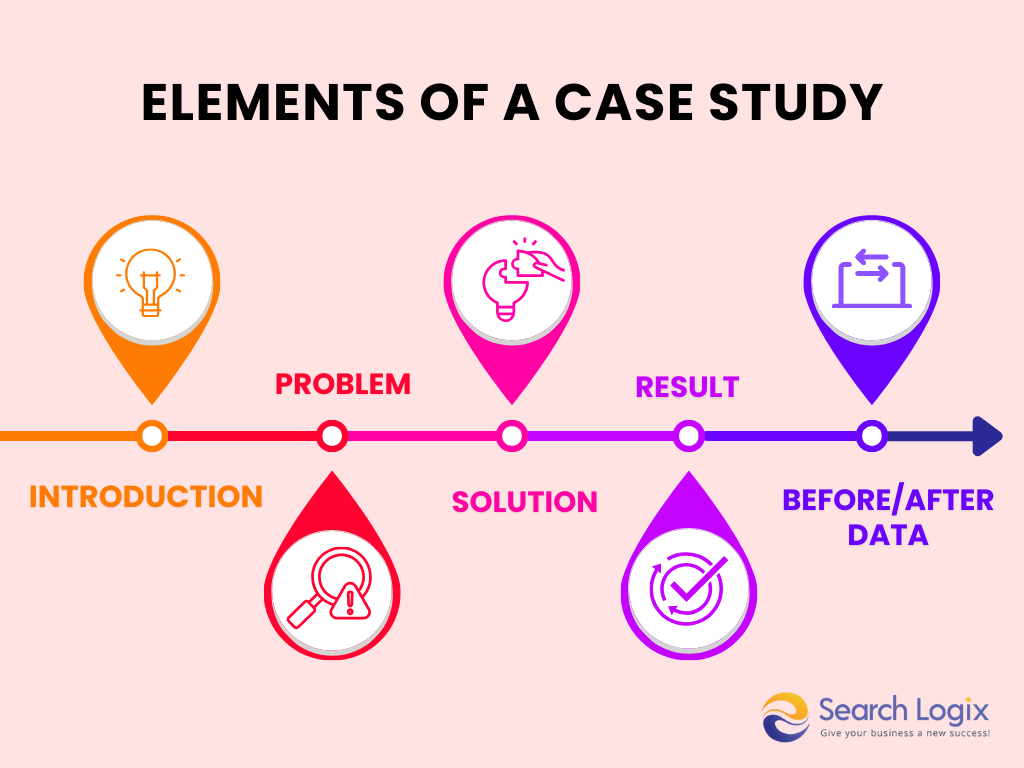A Complete Guide to Creating Content for SEO
Table of Contents
If you’re not creating content with SEO in mind, you’re missing out on a massive opportunity. If searchers can’t find your content through search results, a large portion of your potential audience is lost.
High quality content gets found in search engines and shared on social media. Shareable content does your networking for you. It sees more new faces than your salespeople do. With SEO content, you can create a site that not only ranks well in search results but also performs well in conversions.
The goal is to drive your audience to your web properties through search engine rankings. The higher the rank, the higher the chances of customers finding your website.
Now, if you’re ready to start learning more about and producing SEO content for your business, keep reading. This post covers not just how to write SEO content but how to write good content for SEO.
Understanding SEO Content and Its Purpose
SEO content is online content designed to rank in search engines (like Google). Also, content written for SEO is typically optimized around a specific keyword.There are three major elements you need to consider that will make your website rank well:
- Keyword strategy
- Site structure
- Copywriting
Search engines like Google read your website, so the words you use determine whether or not your site will rank in their results pages. Of course, your website should be well-designed, with a great user interface, and cover all the technical stuff that makes your site rank on SERPs. But without quality content your site doesn’t stand a chance in the search engines.
Creating SEO content isn’t magic, but it can work wonders for your online presence. Here’s how:
- Boosted Visibility: Optimizing your content for search engines means you’re more likely to show up on the first page of results. This translates to greater visibility and gets your brand in front of the right audience.
- Sustainable Growth: Forget short-term bursts. SEO attracts organic traffic, which means people actively searching for what you offer find your site naturally. This builds a steady stream of website visitors over time.
- Enhanced User Experience: SEO helps you create content that’s easy to navigate and understand. This keeps visitors engaged, encourages them to explore your site further, and ultimately, helps them find what they’re looking for.
- Building Trust: When your content consistently ranks well, it builds trust and establishes your brand as a credible source of information in your field.

Creating content for SEO involves keyword research, content writing, and more with the intention to drive more organic traffic to your website. But before we hop on to doing so, we first know what all types of SEO content we have to promote.
Types of SEO Content
You need to understand all types of SEO-optimized content to target different audiences, address their needs, and ultimately, top the search engine rankings. Let’s discuss them:
1. Articles & Blog Posts
These are the workhorses of SEO content. They tackle specific topics, answer questions, and provide valuable information to your audience. Use them to target relevant keywords, establish expertise, and keep your website fresh with new content.

2. Pillar Blogs
Think of these as the cornerstones of your content strategy. They’re comprehensive, long-form pieces that cover a broad topic in depth. Pillar blogs act as hubs, linking to and guiding readers through supporting content like articles and blog posts.
3. Guides
In-depth and informative, guides offer step-by-step instructions or detailed explanations on a specific subject. Ideal for educating audiences and establishing yourself as an authority in your field.
4. Long-Form Content
Going beyond the typical blog post, long-form content dives deep into complex topics. This format allows for thorough exploration, building trust and attracting backlinks (links from other websites) that boost your SEO power.
5. Web Pages
Every page on your website is SEO content, from product descriptions to “About Us” sections. Optimize these pages with relevant keywords and clear, concise information to improve search visibility.
6. Listicles
Catchy and scannable, listicles present information in digestible chunks, perfect for quick answers or comparisons. Use them to showcase benefits, highlight key points, or offer easy-to-follow tips.
7. Glossaries
Define industry-specific terms or complex concepts in a user-friendly glossary. This builds trust with your audience and positions you as a thought leader.
8. Case Studies
Showcase your expertise and build trust by demonstrating real-world results. Case studies detail how you’ve helped clients achieve success, making you a compelling choice for potential customers.

9. Videos
Highly engaging and informative, videos can explain complex topics or showcase products in a dynamic way. Leverage their power to capture attention, improve user experience, and boost SEO.
10. Newsletters
Regularly deliver valuable content directly to your audience’s inbox. Use newsletters to share industry updates, promote new content, and nurture leads.
11. Infographics
Visually compelling infographics present complex data or information in an easily digestible format. Great for grabbing attention, sharing on social media, and boosting brand awareness.
By understanding these diverse SEO content types and strategically incorporating them into your content marketing plan, you can attract your target audience, establish authority, and conquer the search engine landscape.
Tips to Write SEO Content
Now that you’ve got to know about every SEO content type, let’s explore crucial factors that can help creating SEO content. Remember, the purpose here is to engage potential audience, increase organic traffic and boost search rankings.
1. Choose a Topics That Fits Your Purpose
Don’t just write for the sake of writing. Conduct in-depth keyword research to identify topics with high search volume and low competition that are relevant to your niche. This sweet spot ensures you’re attracting a qualified audience actively seeking the information you provide.
2. Select a Content Format
Match your topic to the most effective format. Articles tackle specific questions in a concise way, while guides offer step-by-step instructions for complex topics.
Consider using infographics to present complex data in an easily digestible format, or leverage video to showcase products or conduct interviews with industry experts.
3. Understand Your Target Audience
Imagine your target audience as a real person. What are their pain points? What questions do they have? Conduct audience research through surveys, social media listening, and competitor analysis to understand their needs, interests, and search patterns.
Tailor your content to address their specific challenges and provide solutions they’re actively seeking.
4. Create Structured Outline
A well-defined outline acts as your roadmap to SEO success. Brainstorm key points, logical transitions, and supporting arguments. This ensures your content flows logically, covers all crucial information without redundancy, and keeps readers engaged from introduction to conclusion.

5. Create SEO-friendly Titles & Headings
Titles and headings are your shop window display in search engine results. Craft compelling titles rich in relevant keywords that accurately reflect your content’s value. Use strong verbs, keep it concise, and pique the user’s interest to encourage clicks.
6. Utilize Search-oriented Keywords
Research relevant keywords using keyword research tools and strategically integrate them throughout your content, but naturally.
Don’t keyword stuff! Focus on primary and secondary keywords that users are actively searching for. This helps search engines understand your content’s relevance and increases your chances of ranking higher in search results.
7. Optimize Image ALT Text for SEO
Optimize image alt text with descriptive keywords that accurately reflect the image content. This not only improves SEO but also enhances accessibility for visually impaired users and provides context if images fail to load.
8. Use Internal Linking Wherever Required
Create a strong internal linking structure by strategically linking to relevant pages on your website. This improves user experience by guiding them to deeper dives on related topics, keeps them engaged on your site for longer, and helps search engines understand the hierarchy and flow of your content.
9. Optimize Meta Content
Meta descriptions are like captivating summaries displayed in search results. Optimize them with relevant keywords and a clear call to action (CTA) to entice users to click. Think of it as your elevator pitch – you have a limited amount of space to convince someone your content is exactly what they need.
10. Proofread for Better Readability
Ensure your content is error-free, easy to understand, and flows smoothly. Proofread meticulously for grammar, spelling, and punctuation errors.
Use a conversational tone, break up long paragraphs with subheadings and bullet points, and vary sentence structure to maintain professionalism and enhance user experience.
By following these tips and strategically utilizing different SEO content types, you can craft content that not only ranks high in search engines but also resonates with your target audience, making you a true SEO champion.
Leverage eSearch Logix’s Content Marketing Expertise
Creating content is great, but for it to truly benefit your business, you need to think like an SEO pro. That means optimizing your content to rank well in search engines. The higher your ranking, the more people will see your content, leading to a higher return on investment (ROI).
SEO is a continuous journey. Stay updated on the latest trends, conduct regular keyword research, and refine your strategies to maintain a competitive edge. Don’t be afraid to experiment with different content formats and analyze what resonates best with your audience.
Creating SEO-optimized content that drives results requires expertise and a data-driven approach. At eSearch Logix, we’re a team of passionate content marketing specialists who can help you develop winning SEO content strategies.
We offer a comprehensive range of services, including:
- In-depth keyword research to identify high-potential topics and search terms.
- Content strategy development tailored to your specific goals and target audience.
- Compelling content creation across various formats, ensuring exceptional quality and SEO optimization.
- Content distribution and promotion to maximize reach and engagement.
- Performance tracking and analytics to measure success and refine your strategy for continuous improvement.
Ready to take your content marketing to the next level and conquer the search engine landscape? Contact eSearch Logix today and let our SEO content experts craft a strategy that propels your brand to new heights!







